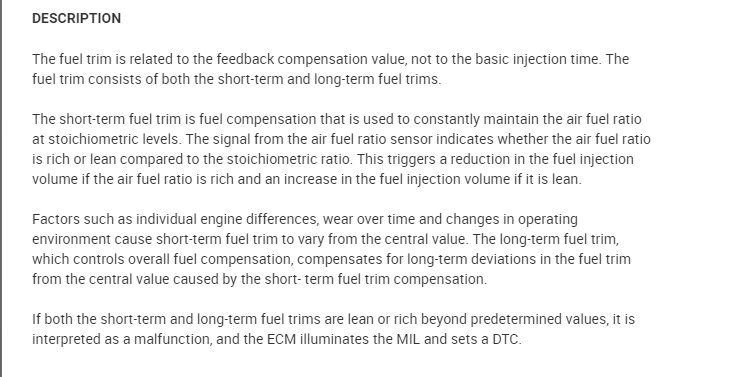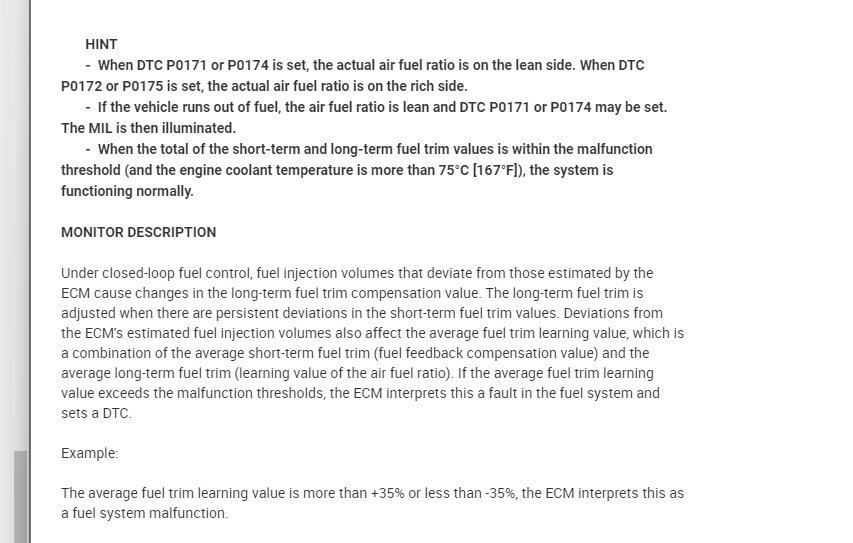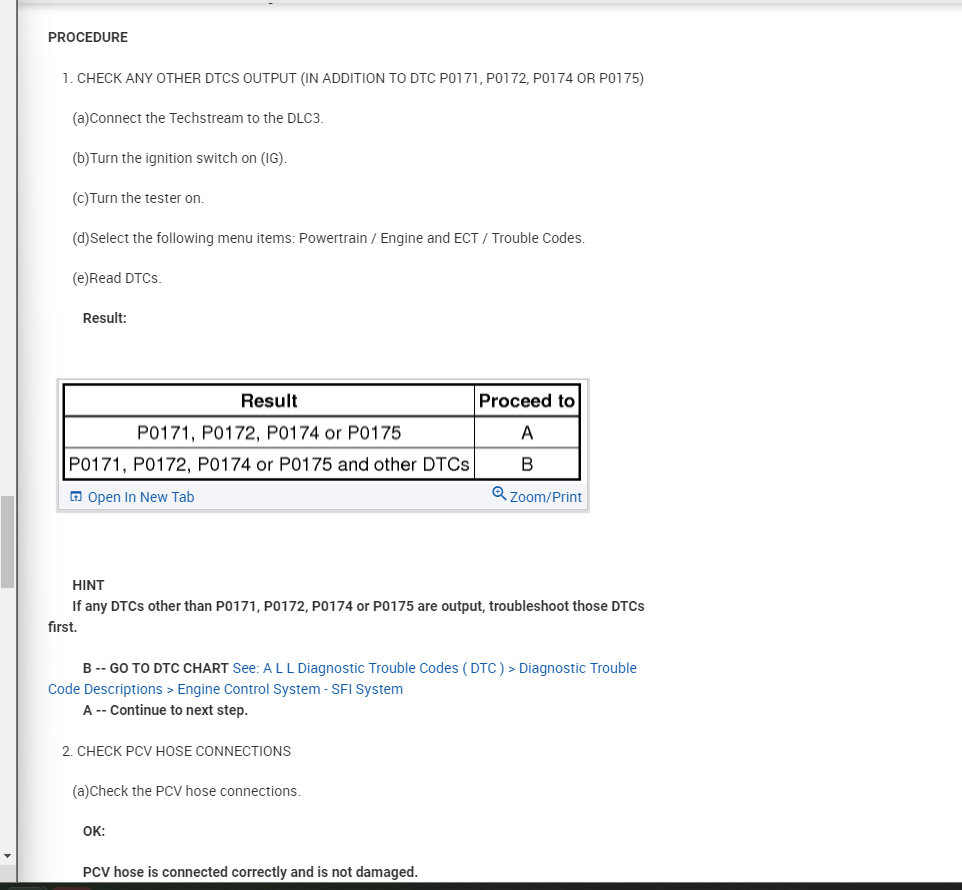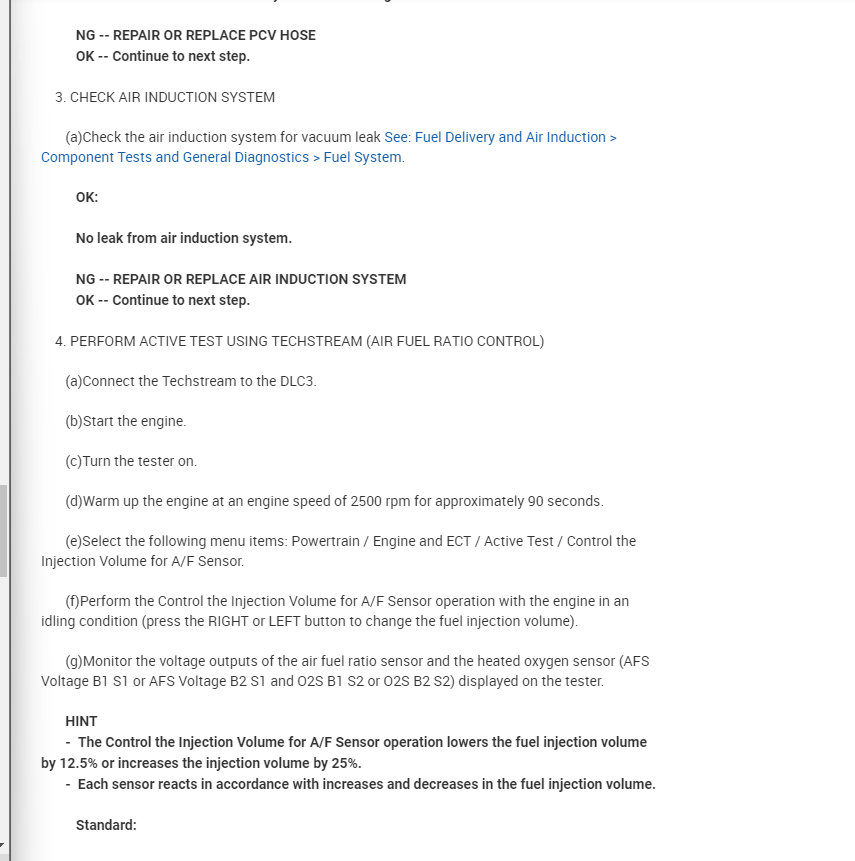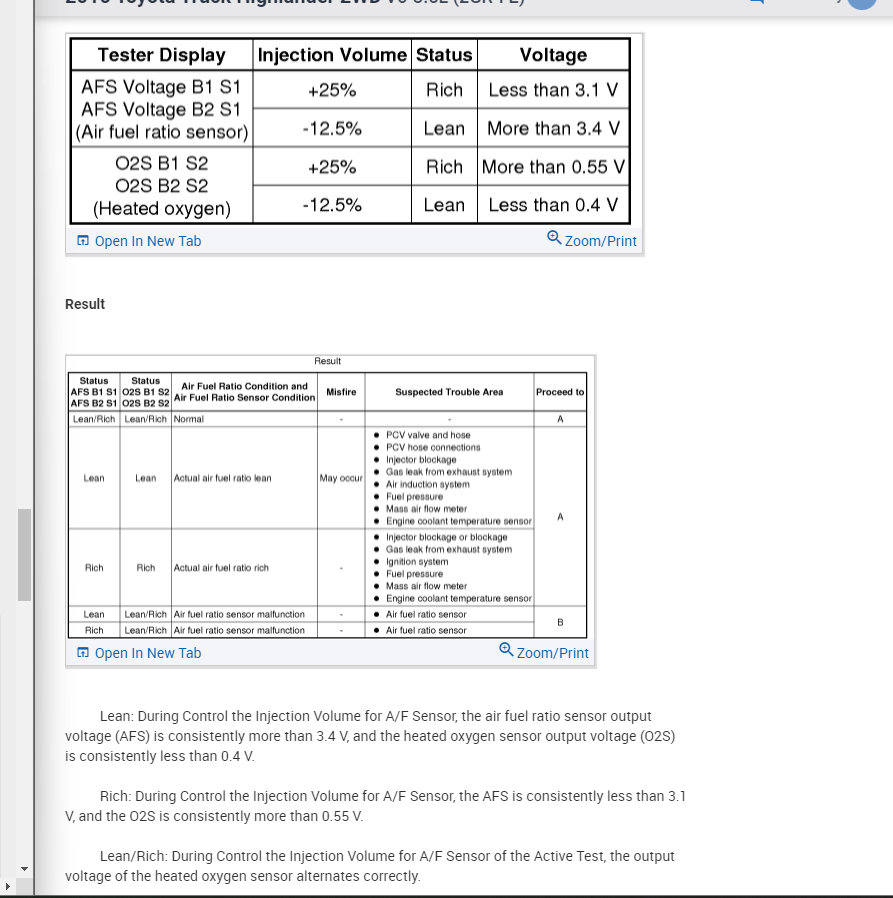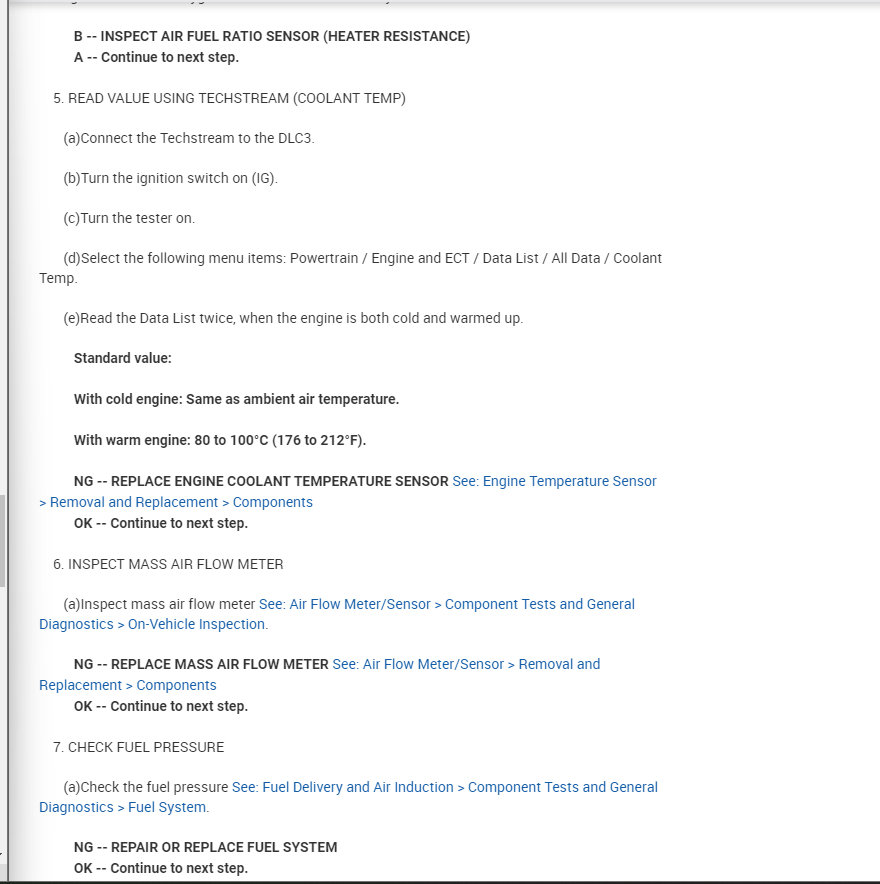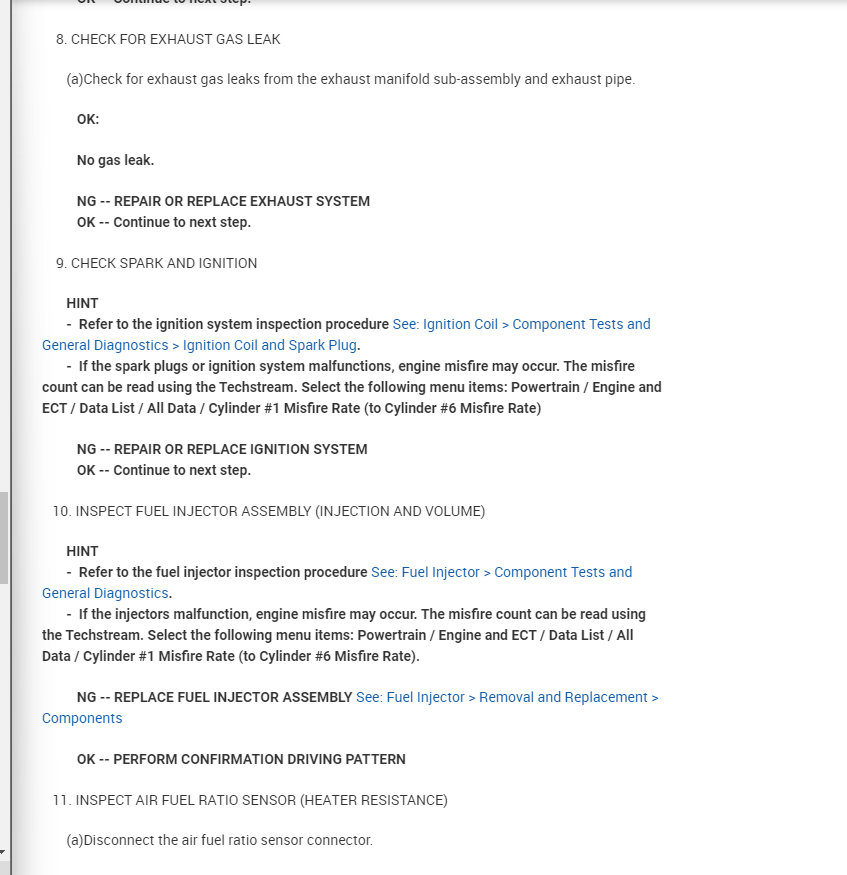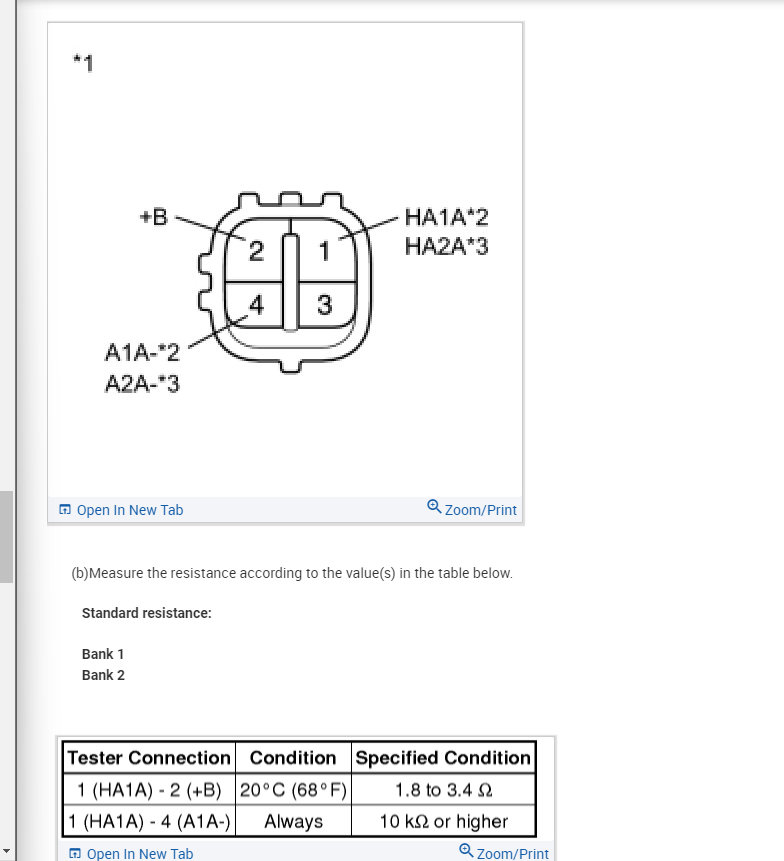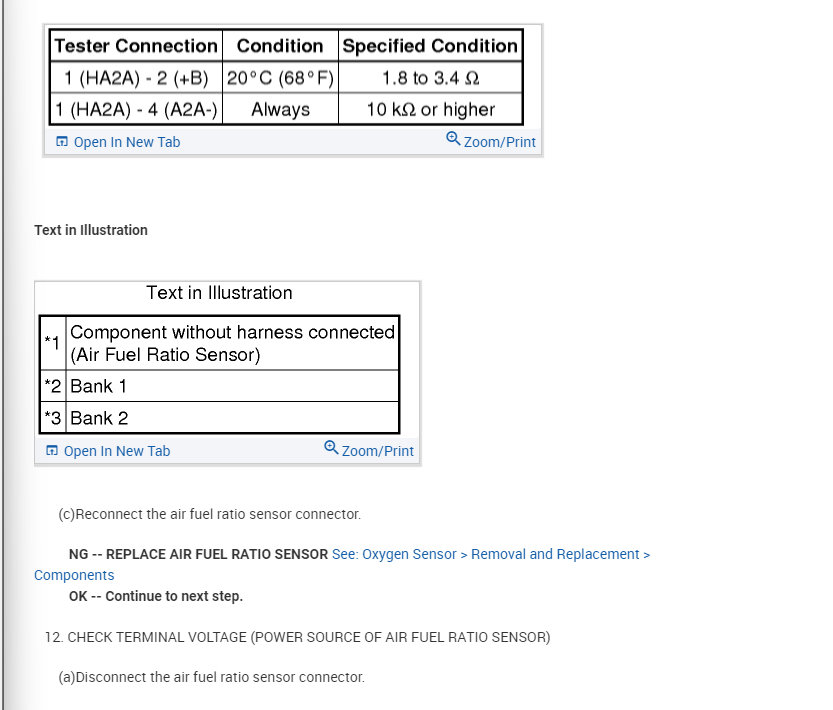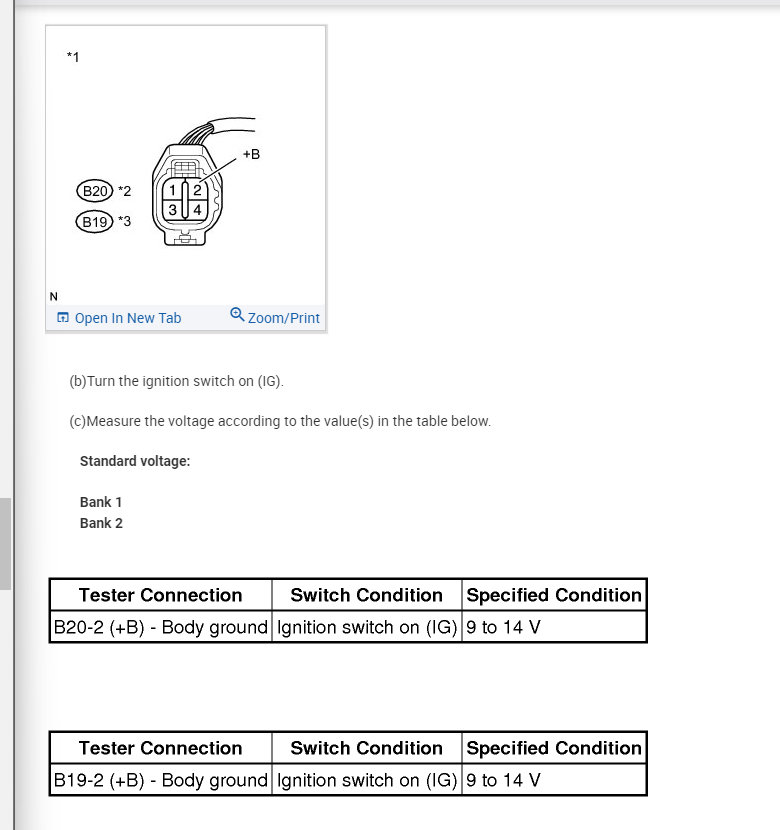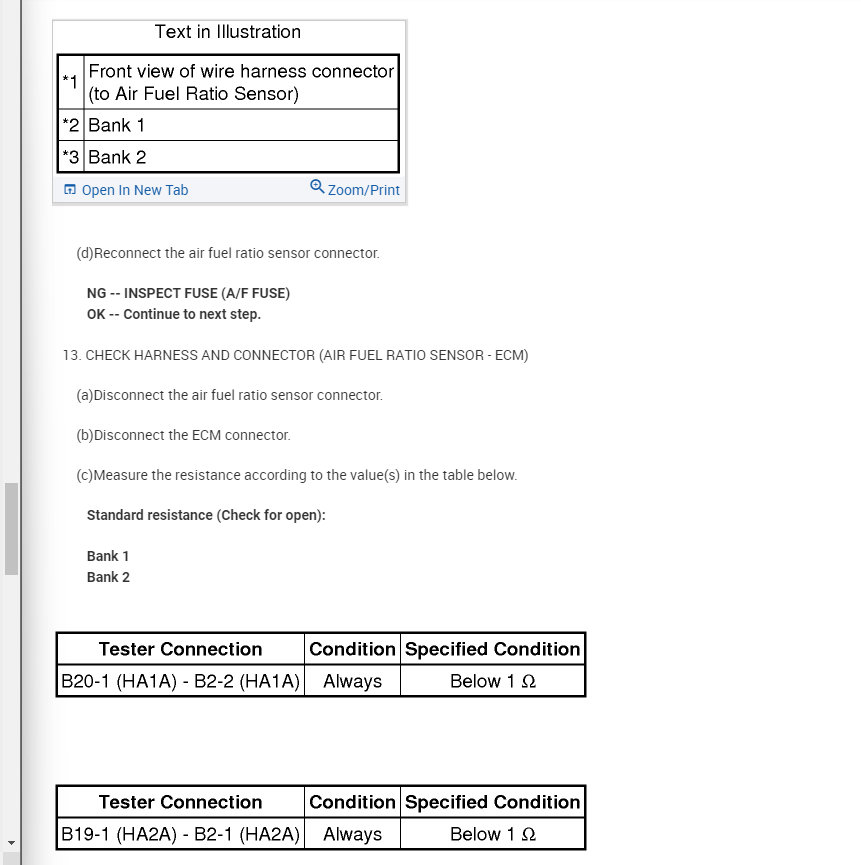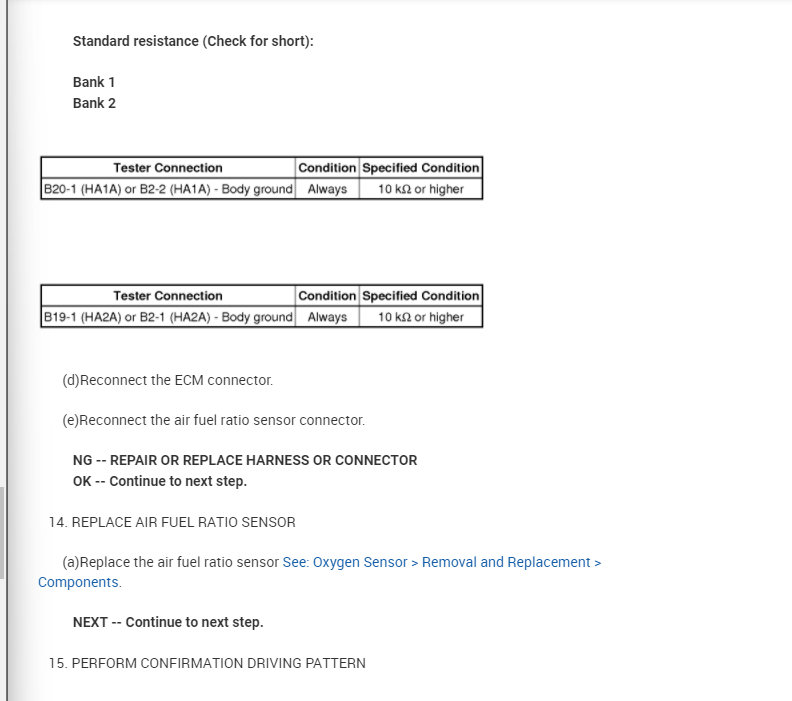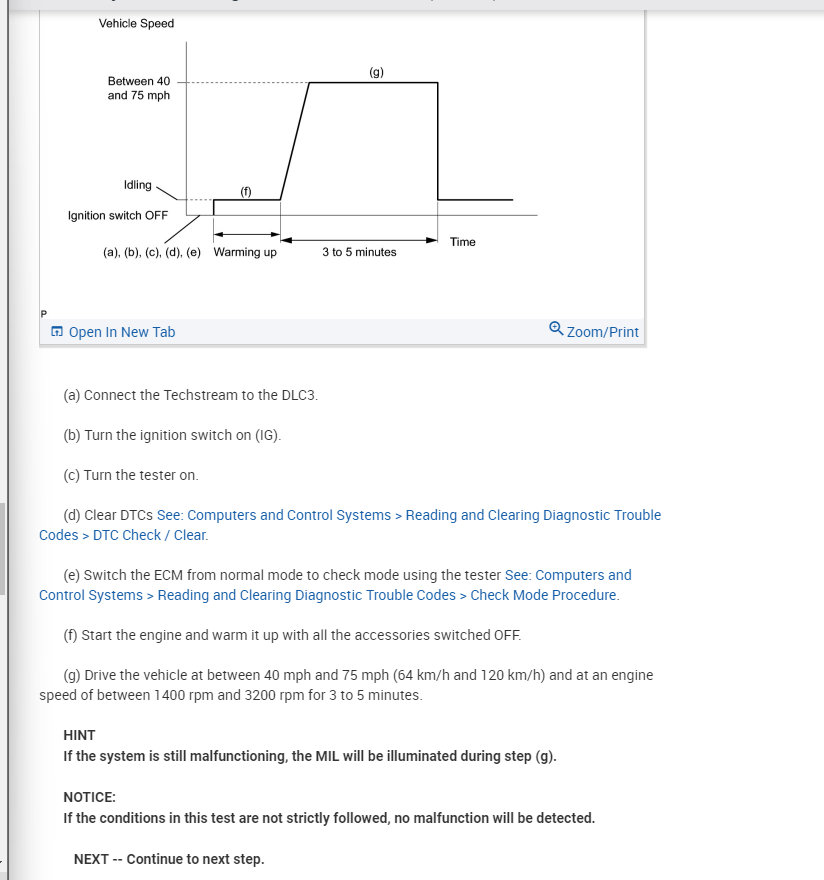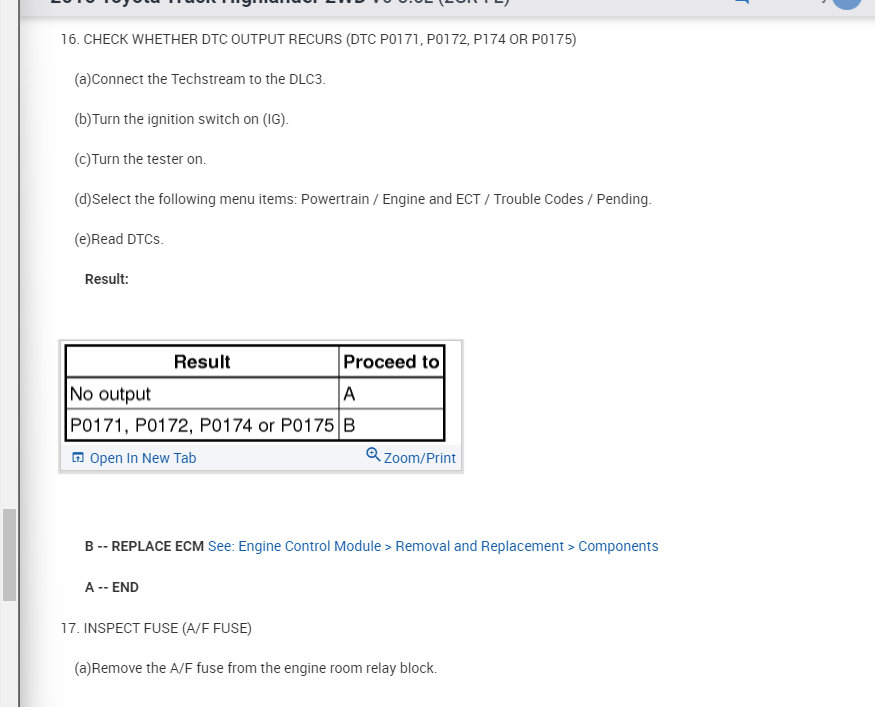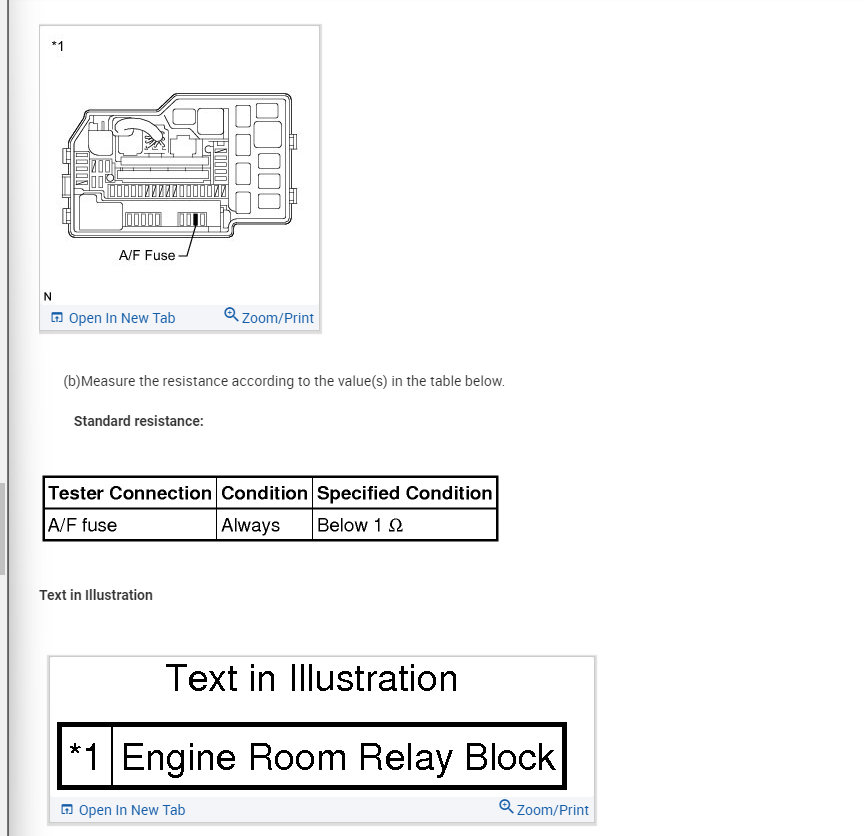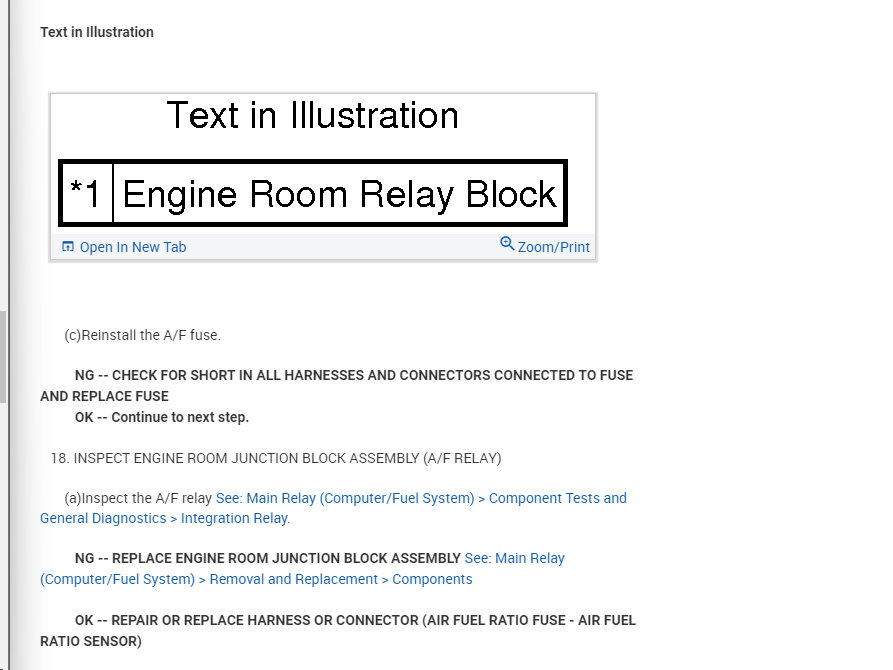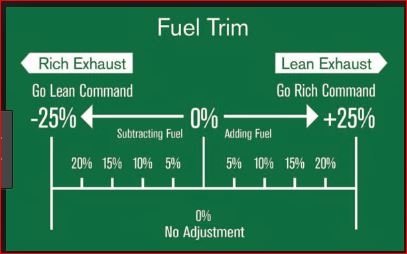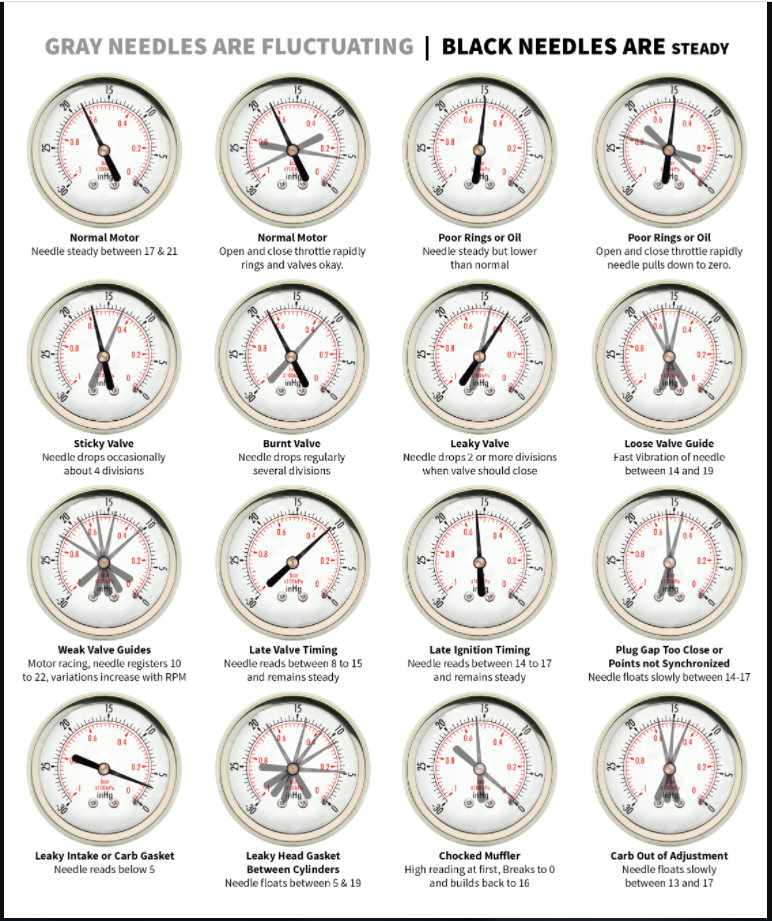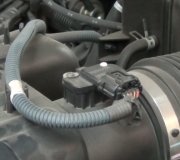I see you have an article about that (https://www.2carpros.com/articles/repair-lean-mixture-codes-p0171-or-p0174-on-some-manufacturers), but your workflow, perhaps geared towards professionals and amateur mechanics, jumps straight from trouble code to physical examination. Here (https://www.vehicleservicepros.com/shop-operations/service-repair/article/10406496/changing-the-program-updating-a-pcm-is-easy-with-the-right-tools) is an example of the sort of guidance I'm after (I'm yet to try these, but if they don't work, I'd like to pay someone for further instructions on tests I could do nail the cause, before taking the car to a hands-on mechanic, so that I know exactly what service to order):
Customer Concern:
MIL illumination with trouble codes P0171 and P0174. The engine runs fine. The fuel filter was changed.
Tests/Procedures:
Monitor the Long-Term Fuel Trim (LFT) readings at idle and at cruise speed to determine when it is lean.
If the readings are highest at idle, look for a vacuum leak.
If the LFT numbers are higher at cruise speed, monitor the fuel pressure and check for a dirty Mass Air Flow (MAF) sensor. Try cleaning the MAF sensor and recheck operation.
If the MAF sensor is clean, monitor the fuel pressure. It should be roughly 30-45 psi and increase under load. Check voltage between the white and white/red wires at the fuel pump. At idle it should read 6-8 volts.
If the fuel trim readings look good under all driving conditions, reprogram the PCM per TSB 07-21-7 if it has not previously been done.
Potential Causes:
Engine Vacuum Leak
Fuel Pump
Mass Air Flow (MAF) Sensor
Powertrain Control Module (PCM) Programming
Tuesday, April 5th, 2022 AT 9:26 PM
